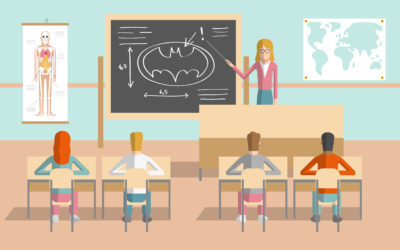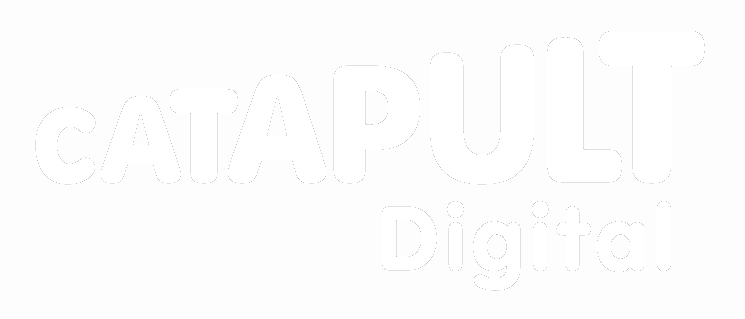Exceptions for Disability
Authors: Laurence Diver, Aline Iramina and Burkhard Schafer
Illustration: Davide Bonazzi
Audio recording (to be updated to reflect current text): Barry Edwards, Bexhill Talking Newspaper
Audio version
There are many situations where copyright can limit the way that people with disabilities access and make use of protected work. For example, a visually impaired user may need to convert the text of a book into a format compatible with screen reading software, a process that would require making a copy of the original work in its entirety.
At the same time, however, European human rights law states that every individual has the fundamental right to access social and cultural works, and to participate in their creation and development ‘regardless of frontiers’.
There is therefore an obvious conflict between these two areas of law. On the one hand those with disabilities have a fundamental right to access information, but on the other hand the author of a copyright work has the right to control the copying of their work, something which may be a necessary step in making a work accessible to those with a particular impairment.
The disability exceptions aim to resolve this conflict, subject to certain limitations. Having a disability does not permit the user simply to ignore copyright, but the existence of the exceptions does mean that the user should be able to enjoy the work as fully as possible.
In this commentary we use the term ‘disabled person’ rather than ‘person with a disability’ mainly because it matches the terminology of the relevant law. It also fits to the ‘social model of disability’: that is, persons do not so much have a disability as are disabled by their environment.
Aim of the disability exceptions
The disability exceptions are based upon the idea of inclusion: if a disabled person is unable to enjoy the copyright work to the same extent as a person without a similar impairment, then the exception may apply.
The exceptions apply to both physical and mental impairments, but this does not include visual impairments which are minor enough to be corrected by the use of glasses or contact lenses.
They allow a disabled person, or someone acting on their behalf, to make a copy of a work for personal use and they allow authorised bodies to make, communicate, make available, distribute and lend accessible format copies of protected works, on a non-profit basis, for the personal use of disabled persons.
Making an accessible copy for personal use
This exception allows a disabled person to create an adapted version of the work so they can enjoy it to the same degree as someone without that disability. This is referred to as an ‘accessible copy’. Importantly, this copy can only be made for the personal use of the disabled person. It can, however, be made by someone acting on behalf of the disabled person, such as a friend or carer.
The accessible copy can comprise the whole or part of the original work, but it can only include those adaptations which are necessary to enable the disabled person to enjoy the work to the same degree as someone without that disability.
When making an accessible copy there is an important criterion to bear in mind: the person must have ‘lawful access’ to the original work. The exception only applies if the copyright work was initially accessed in a lawful way. For example, if a disabled person downloads an unauthorised copy of an ebook from a file sharing service the exception will not apply, regardless of the level of disability or any other circumstances, because he or she did not access the ebook lawfully.
Until 2018, the UK copyright law also contained ‘commercial availability’ restrictions, which established that a disabled person, or those acting on their behalf, should verify whether copies in the same accessible format were not available on the market. If there was, the exception would not apply. However, after the amendments to the UK copyright law to implement the Marrakesh Treaty in 2018, commercial availability provisions were removed from the disability exceptions. So, currently, even though an accessible version of a work has been made available by the publisher, a disabled person, or an individual or organisation acting on their behalf, can make an accessible copy of this work for their person use without authorisation by the copyright owner.
Authorised bodies: making copies for disabled persons
Authorised bodies are permitted to create accessible copies and make them available to disabled persons for their personal use, subject to the same criterion discussed above. That is, the authorised body must have lawful access to the original before relying on the exception.
An ‘authorised body’ is defined as an educational establishment or a body that is not conducted for profit. Accessible copies made by authorised bodies must come with a statement that the copy has been made in accordance with this particular exception and, where practical, provide sufficient acknowledgement of the author of the work.
There are two other important issues to note when considering the role that authorised bodies play in making copyright works accessible to disabled persons.
1. Intermediate copies
If the authorised body needs to create various copies of the work in the process of creating an accessible version for a disabled person they are permitted to do so; these are called ‘intermediate copies’.
For example, a staff member in a library sets out to make a book compatible with screen magnifier software, in order that members of the library with moderate visual impairments can access it. In the process she needs to make several intermediate copies, each of which is an enhancement of the previous one, building towards the finished accessible version. First she creates a scanned copy of the book, then she creates a digitised version using optical character recognition software, and then from this she creates the finished accessible copy with bookmarks and a navigable table of contents.
The intermediate copies created in such a process can be stored, made available, communicated, distributed and lent to other authorised bodies entitled to create an accessible copy. This allows, for instance, other authorised bodies to create accessible copies without having to duplicate the work of the library from our scenario. For example, staff at a second library might use the digitised intermediate copy to create a Braille version of the book, for use by those whose visual impairment is too significant to allow use of the screen magnifier version, or who have multiple disabilities that prevent them from using text-to-voice transmission.
2. Records and notification
An authorised body must keep a record of the accessible copies it makes, the intermediate copies it makes, and the available formats. It should also keep a record of the name and contact details of the authorised bodies from which, or to which, it has engaged in the exchange of accessible copies. Moreover, these records must be made available to the disabled person, another authorised body, or the copyright owner on request, in a reasonable time.
But they must do more than just keep records. Authorised bodies should also take appropriate measures to discourage any inappropriate use of the accessible copies and demonstrate due care in their handling of works and accessible copies. They must publish on their website or other online or offline channels information on how they comply with these obligations.
Charging for an accessible copy
Those who make accessible copies may not profit from them by selling them or making them available for hire. This applies to the disabled person themselves, to individuals acting on behalf of the disabled person, such as friends or carers, and to authorised bodies which create multiple accessible copies for use by a group of disabled people, such as library members.
The maker of an accessible copy may charge for the cost of creating and supplying the copy, but they may not make a profit from it. For example, a blind person’s carer who contacts a specialist company to have an ebook file converted into Braille can charge the cost of the conversion to the blind person but they cannot profit from undertaking this task.
Digital Rights Management (DRM) systems
DRM technology can create problems for the disability exceptions. DRM systems place technical restrictions on digital media, such as music MP3s or ebook files, to prevent any unauthorised copying or use. For example, while you might be able to play a music file on one or more of your own devices (your MP3 player, a phone, a tablet) you might not be able to play it on someone’s else’s device that contains specialist software to assist you; or, an ebook file might allow you to increase the font size of the text for readability but it may not allow screen reading software to narrate the text so that you can listen to the book instead of reading it. So, DRM technology makes it difficult to make copies of digital copyright works. Moreover, it is unlawful to remove the DRM system from the protected work without permission.
However, DRM systems don’t typically differentiate between copying for lawful purposes (such as making an accessible copy under the disability exceptions) and making a copy for unlawful purposes (for example, removing the technical restrictions to make the work available online). That is, although the disability exception might apply the disabled person (or her representative, or an authorised body) may be unable to create an accessible copy because the technology protecting the digital file cannot be bypassed. This means that the DRM system is effectively overriding the disability exceptions.
The designers of some DRM systems may anticipate this problem by building in accessibility features from the outset to remove the need to create accessible copies. However, if those features do not permit the disabled person to enjoy the work to the same degree as someone without that disability, then they will be at a disadvantage because they cannot create an accessible copy even though the exception applies.
The law does provide a mechanism for dealing with situations where a DRM system impedes the operation of the disability exceptions (or indeed any other exceptions). A disabled person, or a representative of a particular group of disabled people (for example a charity promoting the interests of visually impaired people), can lodge a complaint with the Secretary of State who may, at his or her discretion, direct the copyright owner (or their licensee) either to:
- clarify whether there is a licensing scheme in place which would permit the disabled person (or people) to access the work, or
- make available some method of carrying out the use permitted under the disability exceptions.
If so directed, the copyright owner is under an obligation to carry out the relevant action. If they fail to do so, the person or the organisation who lodged the complaint could sue.
Whether this complaint procedure is effective is questionable. Indeed, research suggests that the procedure discourages disabled people from asserting their rights under the disability exceptions, and reducing their ability to access copyright works (without resorting to resort to unlawful methods of DRM removal).
Cross-border exchanges of accessible format copies of works
Disabled people and authorised bodies can also import and access accessible versions of works for non-commercial purposes from similar bodies in other countries without the copyright owner authorisation. The Marrakesh Treaty limits the cross-border exchanges of accessible format copies of works to countries that are party of the treaty. Moreover, the export of these copies can only be made between authorised bodies. However, according to the UK Intellectual Property Office, even before the implementation of the Marrakesh Treaty in the UK, the copyright law already allowed the cross-border exchange of accessible format copies, since it did not place any restrictions on the export and import of copies of copyright works.
From the UK perspective, the biggest difference is the greater availability of accessible format copies of works, especially of books (e.g., e-books, journals, newspapers, magazines etc.), since there are more countries authorising the circulation of works between them without the copyright owner authorisation. For example, an authorised body, such as a library, in the UK can have access to the catalogue of accessible format copies of works from an authorised body in the US, and it can freely import some copies to make them available to a blind person in the UK.
Furthermore, there are other international and regional initiatives to facilitate the cross-border exchange of accessible copies of copyright works. The World Intellectual Property Organisation is responsible for the Accessible Books Consortium (ABC), which includes organisations that represent disabled people, libraries, standard bodies, and organisations representing authors, publishers and collective management organisations and whose main goal is to increase the number of books and other literary works available in accessible formats to people who are blind, have low vision or are otherwise print disabled.
Legal References:
The disability exception is contained in Sections 31A to 31F of the Copyright, Designs and Patents Act 1998, available at http://www.legislation.gov.uk/ukpga/1988/48/contents. Note that, at time of writing, the version of the 1988 Act on the government’s legislation website had not been updated to reflect the changes to disability exceptions described above. Those changes are contained in the 2014 Regulations (see below). Sections 296 to 296ZG of the 1998 Act relate to DRM (‘technological measures’ and ‘rights management information’), and the complaint procedure, described above.
The Copyright and Rights in Performances (Disability) Regulations 2014/1384, available at http://www.legislation.gov.uk/uksi/2014/1384/contents/made, amended the 1988 Act by extending the visual impairment exception to include physical and mental impairments.
The EU Information Society Directive 2001/29/EC permits member states to enact copyright exceptions ‘for the benefit of people with a disability… to the extent required by the specific disability’ (Article 5(3)(b)). The text is available at http://ec.europa.eu/internal_market/copyright/copyright-infso/index_en.htm.
The Copyright and Related Rights (Marrakesh Treaty etc.) (Amendment) Regulations 2018, available at https://www.legislation.gov.uk/uksi/2018/995/made, amended the 1988 Act to align with Directive (EU) 2017/1564.
The EU Information Society Directive 2001/29/EC permits member states to enact copyright exceptions ‘for the benefit of people with a disability… to the extent required by the specific disability’ (Article 5(3)(b)). The text is available at http://ec.europa.eu/internal_market/copyright/copyright-infso/index_en.htm.
The European Convention for the Protection of Human Rights and Fundamental Freedoms (1950, as amended) provides that the right to freedom of expression, which is enjoyed by everyone, includes the right to ‘receive and impart information and ideas without interference by public authority and regardless of frontiers.’ (Article 10(1)). The text is available at https://ec.europa.eu/digital-agenda/sites/digital-agenda/files/Convention_ENG.pdf.
The Charter of Fundamental Rights of the European Union (2000) repeats the European Convention’s reference to the right to impart information and ideas ‘regardless of frontiers’ in Article 11(1). The text is available at http://www.europarl.europa.eu/charter/pdf/text_en.pdf.
The Marrakesh Treaty to Facilitate Access to Published Works for Persons Who Are Blind, Visually Impaired, or Otherwise Print Disabled, available at https://www.wipo.int/treaties/en/ip/marrakesh/.
Directive (EU) 2017/1564 of the European Parliament and of the Council on certain permitted uses of certain works and other subject matter protected by copyright and related rights for the benefit of persons who are blind, visually impaired or otherwise print-disabled and amending Directive 2001/29/EC on the harmonisation of certain aspects of copyright and related rights in the information society. The text is available at: https://eur-lex.europa.eu/eli/dir/2017/1564/oj
Regulation (EU) 2017/1563 of the European Parliament and of the Council on the cross-border exchange between the Union and third countries of accessible format copies of certain works and other subject matter protected by copyright and related rights for the benefit of persons who are blind, visually impaired or otherwise print-disabled. The text is available at https://eur-lex.europa.eu/legal-content/EN/TXT/?uri=CELEX%3A32017R1563
Related
Education
The use of materials protected by copyright is essential to the learning process. Educational resources exist in all formats that are recognised as ‘works’ in copyright law.
Libraries
This guide is aimed at the wide range of staff working in libraries and information services. Copyright exceptions apply equally to all staff working in libraries including library or information assistants.
Research & Private Study
Students and researchers often need to make use of materials which are copyright protected. In the context of their research or study, they may have to make copies or use extracts of those materials.











